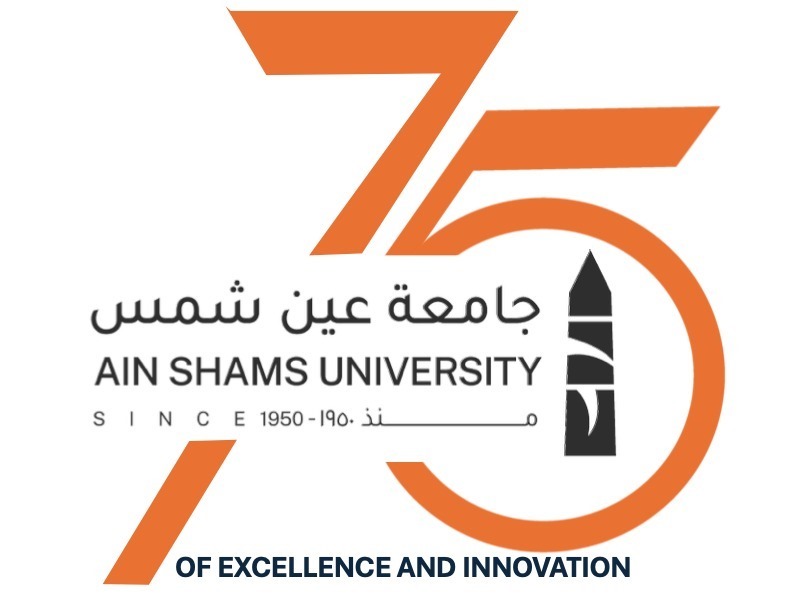A qualification program for safety and civil protection and a distinguished evacuation experiment implemented by the university’s civil defense at the Faculty of Education
The Faculty of Education, at Ain Shams University, organized the evacuation experiment of the faculty’s biological and geological sciences building, in order to prepare in the event of any emergency occurring in the university’s environment. The evacuation experiment comes as a vital step to achieving these goals, as these experiments are considered decisive moments to evaluate the faculty’s readiness in dealing with situations Emergency and ensuring the safety of community members at the university.
This came under Prof. Mohamed Diaa Zain El-Abedeen, President of the University and Prof. Ghada Farouk, Vice President of the University for Community Service and Environmental Development Affairs and Prof. Safaa Shehata, Acting Dean of the Faculty of Education, under the supervision of Major General Hossam El-Sherbiny, Assistant Secretary-General for Community Service and Environmental Development Affairs, and under the supervision of Prof. Aladdin Abdel Halim Faraj, Vice Dean of the Faculty for Community Service and Environmental Development Affairs, in coordination with Prof. Hanan Helmy Latif, Head of the Department of Biological and Geological Sciences at the Faculty, with organizational follow-up from Dr. Asmaa Mahmoud Maghazi, member of the Community Service and Environmental Development Committee for the Department of Biological and Geological Sciences. With the implementation and follow-up of the University’s Civil Defense Department, headed by Mr. Adel Muhammad Abdel Latif, Director of the University’s Civil Defense Department, and the university’s work team, in coordination with the Faculty’s Civil Defense Department, on Wednesday, March 6, 2024.
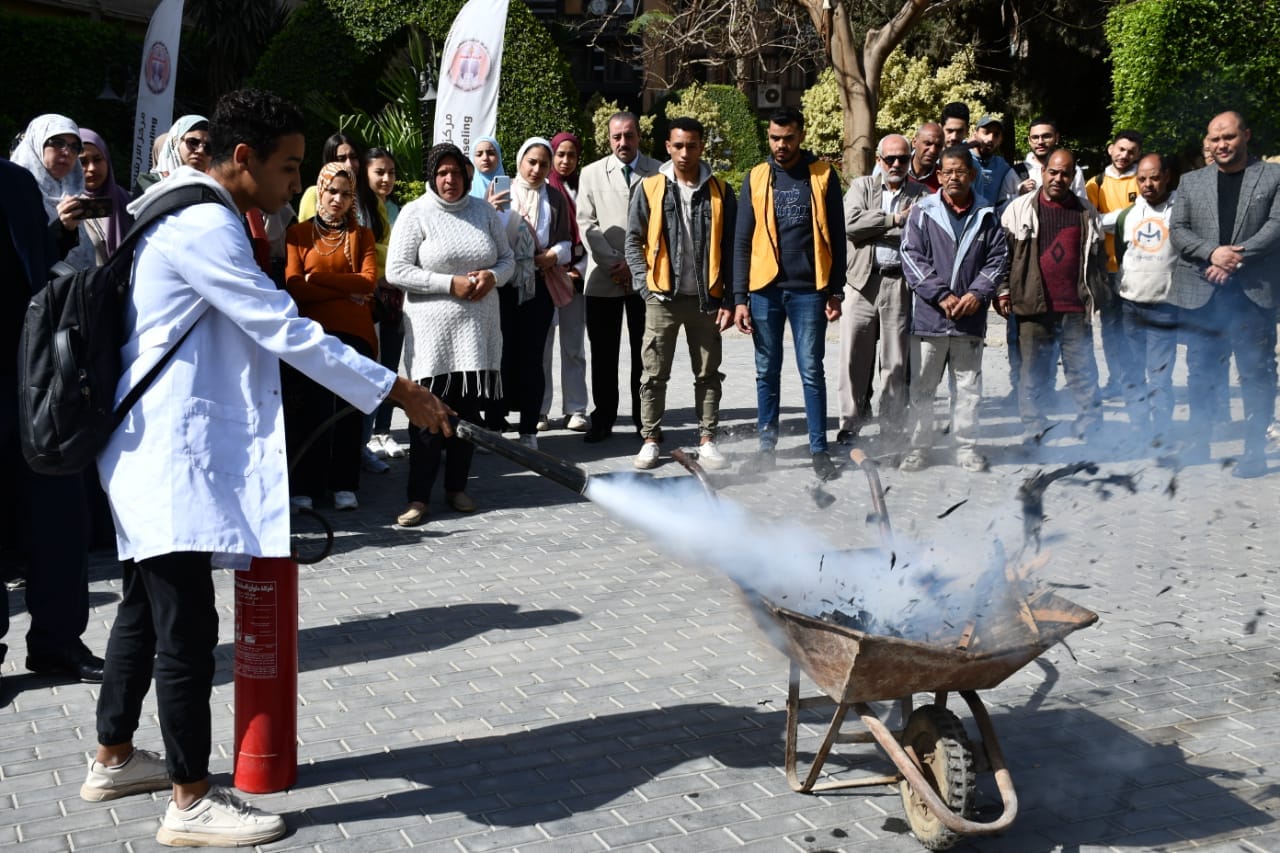 |
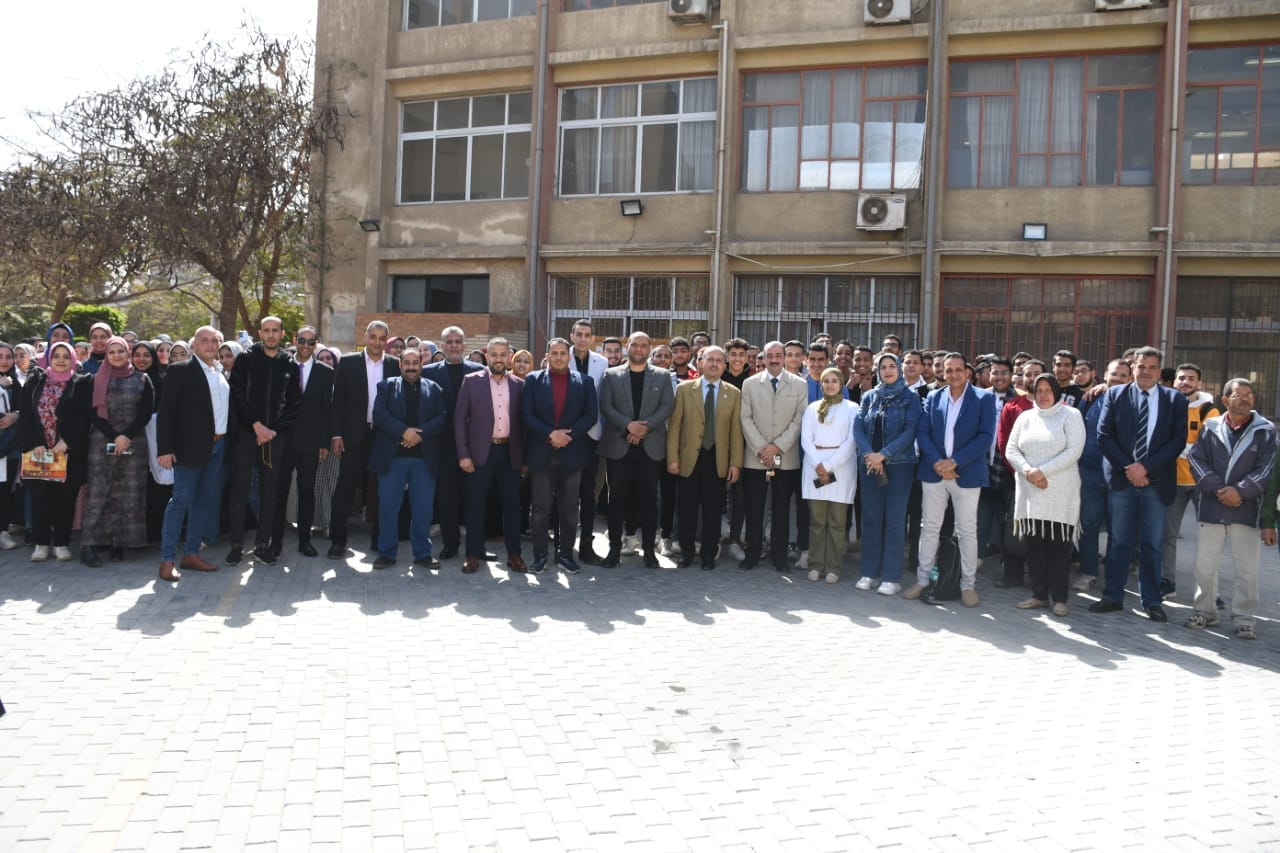 |
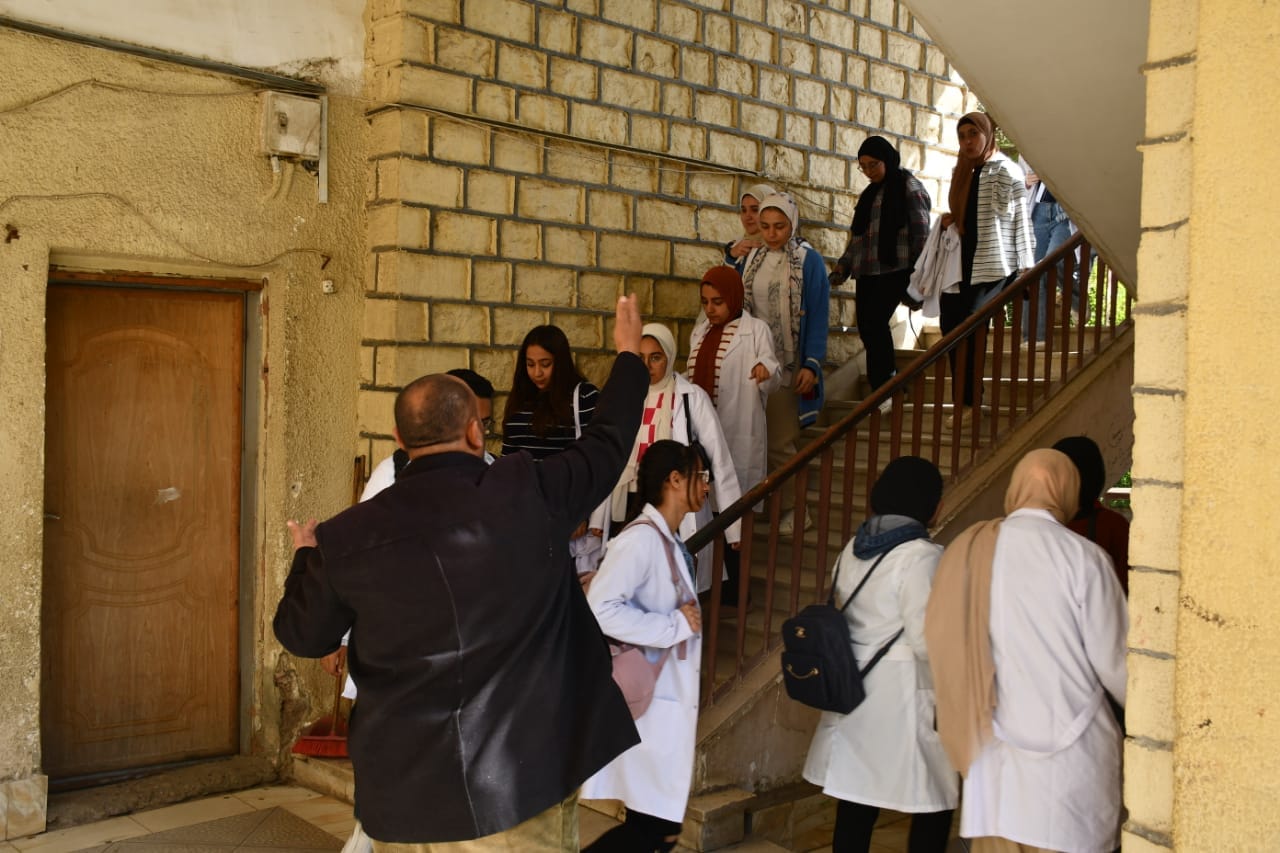 |
||
A distinguished evacuation experiment was carried out at the Faculty of Education at Ain Shams University, in cooperation with the University’s Civil Defense Department, in one of its important buildings, which is the Department of Biological and Geological Sciences building, as a focal point for this experiment. This is due to the importance of this building and its vitality within the structure of the faculty and its daily movement. The selection of this building to implement the experiment reflects the great care and dedication to enhancing the concept of safety and emergency preparedness in the university environment that contains auditoriums, study laboratories, faculty rooms, etc. The focus is on ensuring the safety of students, faculty staff and administrators, and enhancing awareness of the importance of effective response in emergency situations.
The experiment was preceded by a package of workshops through the university’s civil defense management team, in coordination with the faculty’s civil defense administration, and with the participation of a large number of faculty staff, teaching assistants, students, administrators, and workers, to work on the necessary preparations for the distinguished conduct of this experiment on Sunday, March 3, 2030. This was followed by an inspection of the building and a review of all requirements necessary to carry out the evacuation experiment.
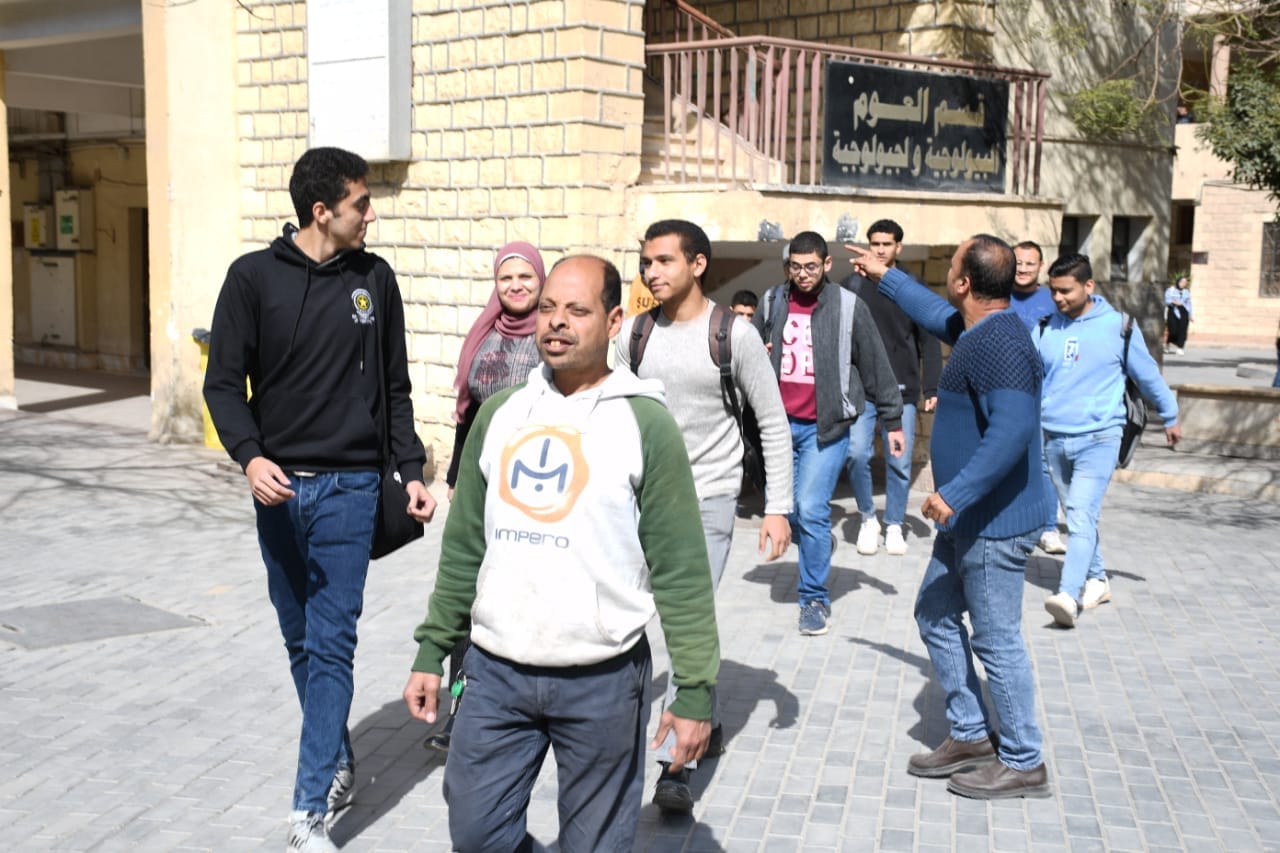 |
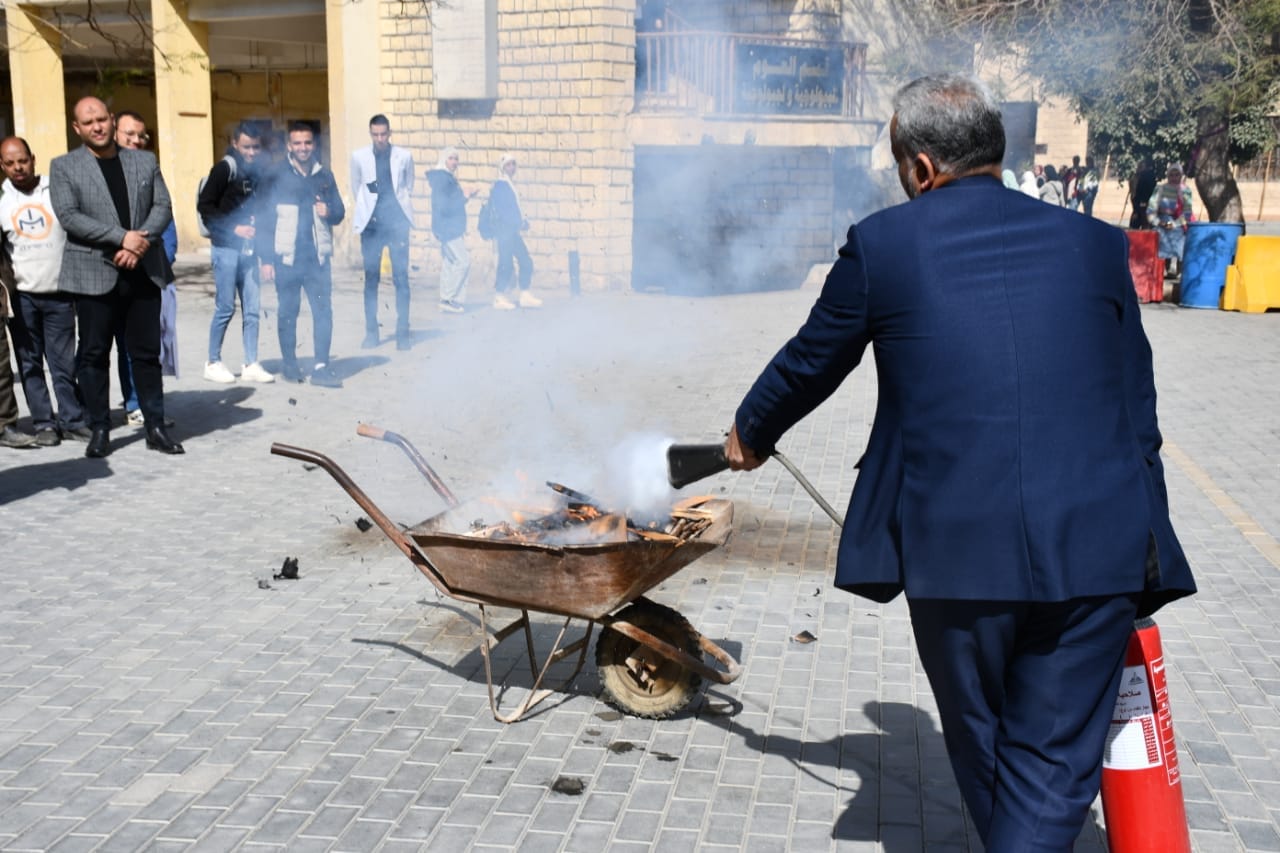 |
|
The evacuation experiment was carried out at exactly ten o'clock in the morning on all floors of the building, laboratories, terraces and rooms, and it demonstrated the speed of control during an emergency using available means and the speed of evacuating male and female students, workers, employees, faculty staff, and teaching assistants, with the presence of the civil defense team from the university headed by Mr. Adel Abdel Latif, Director of the university's Civil Defense Department and the work team from the administration, the experiment was completed on time with the combined efforts of all the faculty and university, and was characterized by record time in implementation, in addition to the wonderful organization and full commitment of everyone to all instructions received from the Civil Defense. It was followed by a demonstration and practical training for extinguishing fires with various types of extinguishers, and the students, the teaching assistants, faculty staff and administrators were trained on it by the civil defense team.
At the conclusion of the experiment, thanks and appreciation were given to the university administration, the civil defense administration, the faculty, all participants in the experiment, and all the work teams for their combined efforts to make the experiment a success.


.svg)
